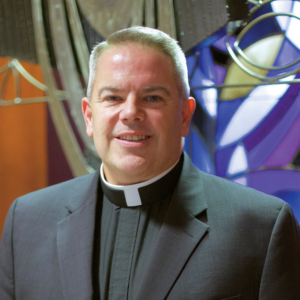Praying with Martin Luther in an Chaotic World
In 1529, Martin Luther published German and Latin versions of what is sometimes called “The (Great) Litany,” a revision of the Roman “Litany of the Saints” with all of the invocation of the saints removed. An English translation is found in Lutheran Service Book on page 288. It is a model prayer that includes petitions for the spheres of family, church, and state, rooting all in God’s gracious providing. During these challenging times, it would be good to place Luther’s action in historical context.
In May 1521, following the Diet of Worms, Martin Luther went into hiding at the Wartburg Castle. Emperor Charles V issued the Edict of Worms which declared him an outlaw. While in hiding at the Wartburg Castle, chaos began to ensue in Wittenberg. At the end of 1521, one of his colleagues, Andreas Karlstadt, sought radical reforms to the Wittenberg church which led to riots and violence. Luther would finally be forced to return and address the insurrection. Just two years later, the German Peasants’ War would lead to the deaths of as many as 100,000 in Germany. Luther would respond with his “Admonition to Peace,” which criticized the German nobility for their abuse of the peasants, but then condemned the violence of the peasants. Luther saw firsthand the effects of “sedition and rebellion.”
In 1527, the Plague came to Luther’s own doorstep as it began to spread in Wittenberg. Some 20 people died within the first two weeks of the outbreak in the town of less than 5000. Elector John encouraged Luther to flee like so many of his university colleagues. The plague would last for less than six months but would claim the lives of friends and associates. Luther and his pregnant wife Katharina dealt with the fear of the epidemic and his own illness at the time. This was the time period when he wrote the letter, “Whether One May Flee from a Deadly Plague” and also the hymn “A Mighty Fortress is Our God.”
In Luther’s lifetime he dealt with false teaching within the Church, political strife, insurrection, an epidemic, physical ailments, depression, betrayal, grief, and a seemingly endless list of other hardships. When Luther encourages the praying of “The Litany,” it is a prayer that addresses all of life’s challenges in view of God’s mercy.
- For the election of our nation’s president for the next four years. O Lord, have mercy.
- For our communities as COVID-19 numbers continue to rise. O Lord, have mercy.
- For our nation as violence and unrest continues. O Lord, have mercy.
- For our congregations as they experience separation due to COVID-19. O Lord, have mercy.
In 2020, we are experiencing some of the same types of hardships that Luther faced in his day. As your congregation or family gather for worship on Thanksgiving, consider praying “The Litany” from Lutheran Service Book. It is a fitting time to remind our families that we face each day and hardship only by the mercy of God. This prayer appropriately includes in the petitions every facet and season of life under heaven for the people of God. Now is the time to remind us all to implore our good Lord to hear us for the sake of Jesus.
O Lord, have mercy.
O Christ, have mercy.
O Lord, have mercy.
Amen.

Fraternally in Christ,

President Lee Hagan
Rev. Dr. R. Lee Hagan was elected as the fifth president of the Missouri District-LCMS in 2015. He is a 1992 graduate of Concordia College (now University), Seward, Nebraska. He graduated from Concordia Seminary, St. Louis with a Master of Divinity in 1996 and Doctor of Ministry in 2011. Dr. Hagan served as associate pastor of St. Paul’s Lutheran Church in Evansville, Indiana from 1996-2002. In 2002, he was called to serve as senior pastor of St. Paul’s Lutheran Church, Concordia, Missouri until he was elected district president. Additionally, he served as the Interim Director of LCMS Rural and Small Town Mission from 2011-2012. He has previously served as Missouri District first vice-president from 2012-2015, fourth vice-president from 2011-2012, and chairman of the Board for Congregational Services from 2006-2011. He has presented workshops and retreats on a host of ministry topics including elders, rural ministry, outreach and ministry to inactives. He has written articles for Lutheran Witness, Concordia Historical Quarterly and Missio Apostolica. He has led mission trips to Cambodia, China, Guatemala and the Bahamas. Dr. Hagan is married to Jill (nee Johnson), who works as a speech-language pathologist. They have two children, Caroline and Jack.

